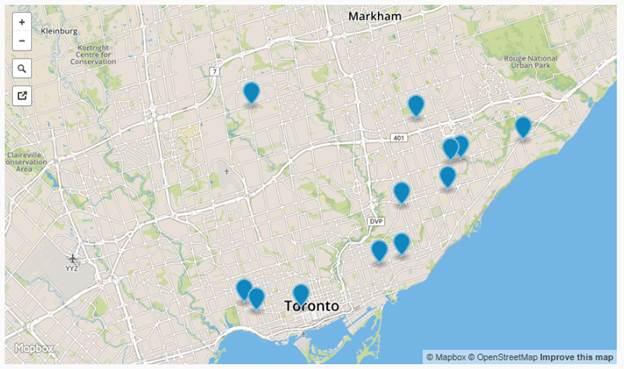
City to create ‘seniors safety zones’ to protect older pedestrians
Mayor Tory and public works chair Jaye Robinson reveal the 12 locations that will get enhanced safety measures.
TheStar.com
Jan. 10, 2017
Ben Spurr
Following the release of statistics that showed an overwhelming majority of pedestrians killed on Toronto’s streets last year were older adults, the city has announced details of its plans to create “seniors safety zones” at 12 intersections.
According to police data released last week, 37 of the 43 pedestrians killed last year were 55 or older. It was the deadliest year for pedestriansin more than a decade, and also the worst year for older pedestrian deaths over that time.
“We must do more to prevent these deaths and to protect residents across the city. The number of people killed on our roads, pedestrians, every year, should be zero,” said Mayor John Tory at a Tuesday morning at press conference at the intersection of Bloor St. W. and Dundas St. W.
The intersection will be the first location where the city establishes a seniors zone, which was one of the measures approved by council last July as part of the new $80-million road safety plan.
Public works chair Councillor Jaye Robinson said the locations were chosen based on where city data shows there have been a high number of seniors involved in traffic collisions, and there is a concentrated population of older residents.
Dundas and Bloor is close to medical offices and seniors housing, and according to Robinson, four pedestrians have been killed and five more seriously injured at the intersection in the past six years, all of them older adults.
The package of safety measures coming to Dundas and Bloor include speed limits reduced to 40 km/h from 50 km/h, eight seniors safety signs warning drivers to slow down, four “watch your speed signs,” enhanced pavement markings, and longer pedestrian crossing times. Red light cameras are also being installed.
Seniors safety zones

The other zones will get a similar package of improvements. Robinson said the goal is to implement all 12 in the first quarter of this year.
Kasia Briegmann-Samson, a co-founder of Friends and Families for Safe Streets, said she was encouraged by the action the city has taken since council approved the road safety plan last summer. But said the measures like the seniors zones need to be expanded. She noted that seniors live in communities across the city, not just at 12 locations.
“The whole city should be seniors safety zone, should be a community zone, should be a kid zone, should be a family zone,” she said.
“There’s going to be pockets that are left out. There’s going to be neighbourhoods that don’t have resources to advocate for themselves that are going to be left out, unless we include the whole city. So that eventually needs to happen.”
In response to reporters’ questions, Robinson (Ward 25 Don Valley West) stressed that the city’s road safety plan is “data-driven.”
“We want to do things in a strategic way,” she said. “The strategy looks at the data.”
Robinson also announced on Tuesday the creation of a new website for the road safety plan, which will allow residents to track its progress and view data on traffic collisions.
The road safety plan, which is the city’s first such strategy, will be executed over five years.
In addition to the seniors safety zones, other measures the city plans for 2017 include erecting red light cameras at 76 new locations, installing accessible pedestrian signals at 20 intersections, making geometric safety improvements at 13 locations, performing 14 road safety audits, speed reductions on 32 corridors, and expanding the “watch your speed” program.
